Great Barrier Reef
Monday, October 26, 2009:
We had enough light for shorebirding by about 5:30am. Moreover, the tide was going out, so there were plenty of shorebirds present. Before breakfast we found Black-tailed Godwit, Common Greenshank, Great Knot, Lesser Crested Tern, Curlew Sandpiper, Terek Sandpiper, Lesser Sand-Plover, Gray-tailed Tattler, Marsh Sandpiper, and Red-capped Plover. Then we went to breakfast.
After breakfast, it was time to head to the boat for out trip to the Great Barrier Reef. The boat took us to Michaelmas Cay. As we approached, all you could really see of the reef was a line of breakers stretching out on either side of the cay.
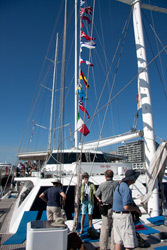 |
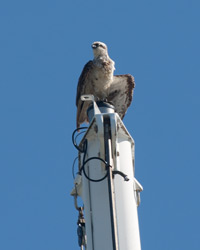 |
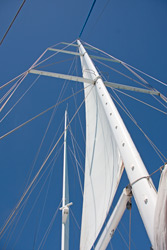 |
| On Deck | Osprey | Rigging |
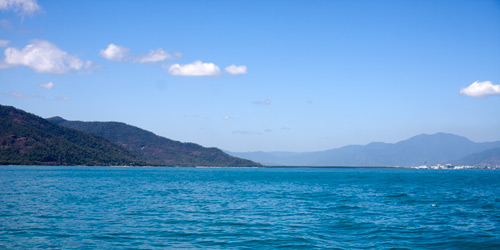 |
||
| Looking Back at Cairns | ||
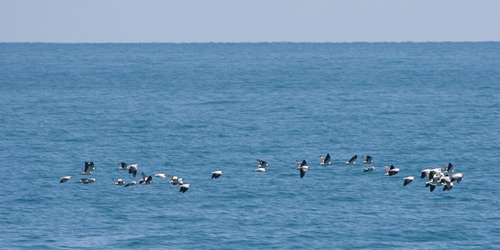 |
||
| Torresian Imperial-Pigeons | ||
Several birds were seen en route, including Bridled Tern, Brown Booby, and Black-naped Tern. As we neared the island, a couple of Great Frigatebirds wheeled overhead. Both Brown and Black Noddies were perched on the rail of our semisubmersible, which was anchored off Michaelmas Cay. There were also some Brown Boobies and two light-morph Red-footed Boobies.
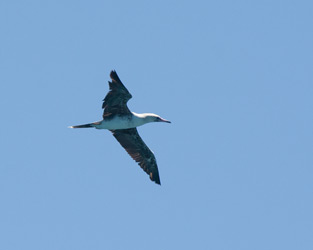 |
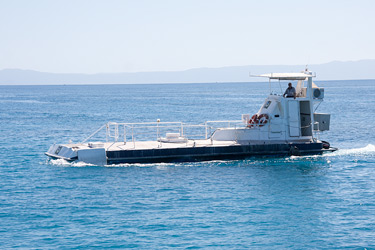 |
| Red-footed Booby | The Semisubmersible |
Jeri had secured tickets for all of us on the first semisubmersible trip. It was incredible! We passed several towers of coral, mostly at very close range. At times it seemed we would hit it, but we didn't. We not only saw spectacular corals, but also a variety of multicolored reef fish. Suddenly I understand why scuba diving is so popular on coral reefs.
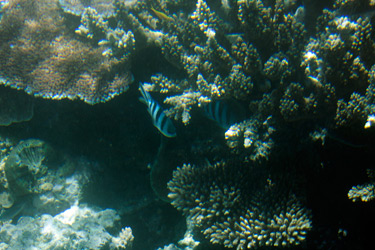 |
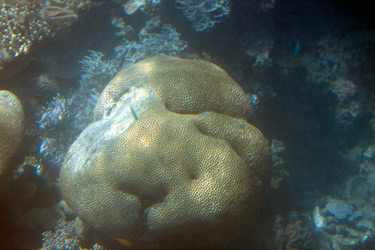 |
| Reef Photos from Semisubmersible | |
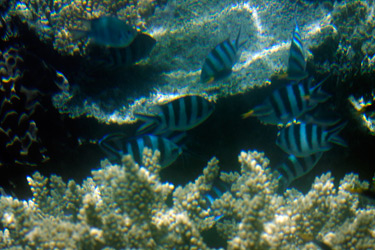 |
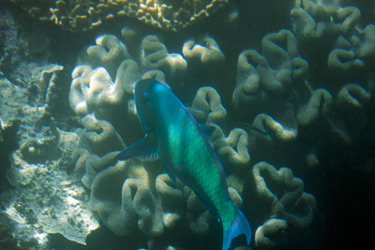 |
| Reef Photos from Semisubmersible | |
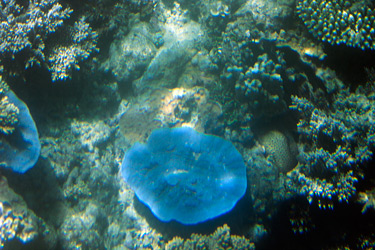 |
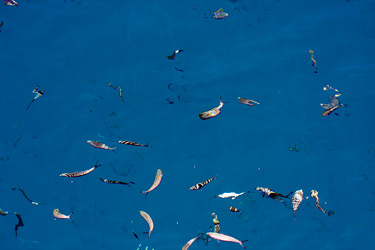 |
| Reef Photos from Semisubmersible | Reef Fish |
After returning to the catamaran, we scanned our side of the key for interesting birds. This place reminds me very much of the Dry Tortugas, and I felt very much in my element here. Many species were familiar—Bridled and Sooty Terns, Black and Brown Noddies, Frigatebirds (different, but familiar just the same), Brown Boobies, Ruddy Turnstones—and I was once again an expert birder instead of a beginner.
I also noticed that as at the Dry Tortugas, the Bridled Terns mostly sat on floating objects, while the Sooties mostly sat on shore. I did finally find a Sooty on a float before we left, but it was an exception. It was also the case that the Black Noddies were only briefly visible after we arrived. Then they took off for points unknown.
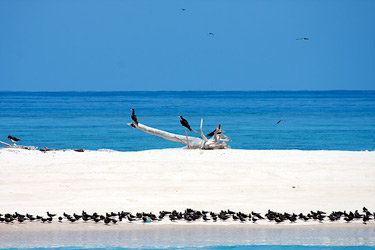 |
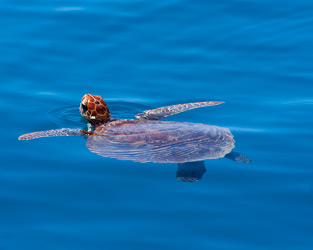 |
| Birds of Michaelmas Cay | Green Sea Turtle |
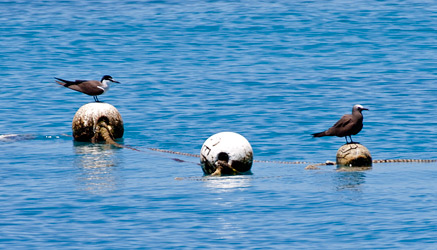 |
|
| Bridled Tern and Brown Noddy | |
After a while, I took the shuttle to the beach to get closer to the seabirds. There is a rope that marks off the beach used by people from bird habitat. Some of the young Sooty Terns were sitting in the shadow of the rope trying to keep cool. In the tropics, even the baby birds know to seek shade whenever possible.
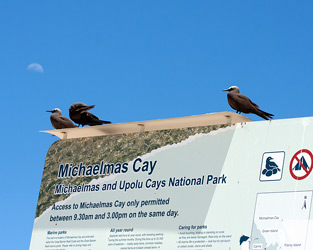 |
|
| Brown Noddies Welcome Us to Michaelmas Cay | |
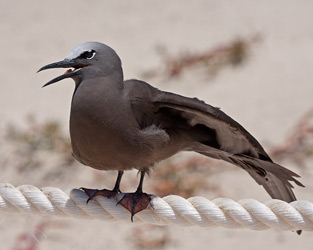 |
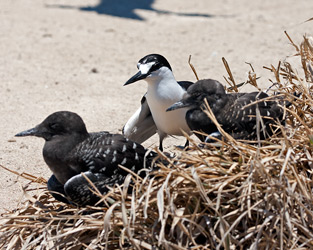 |
| Brown Noddy | Sooty Tern with chicks |
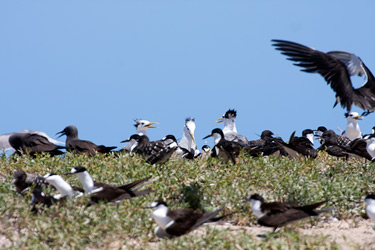 |
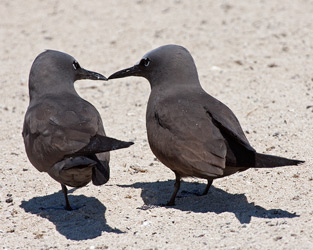 |
| Birds on Michaelmas Cay | Brown Noddies |
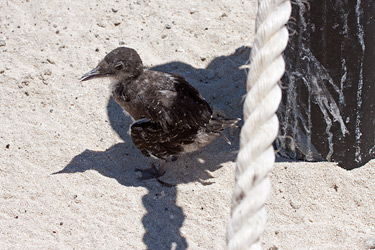 |
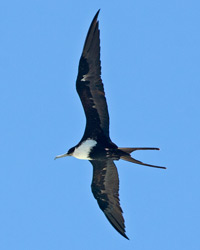 |
| Young Sooty Tern | Great Frigatebird |
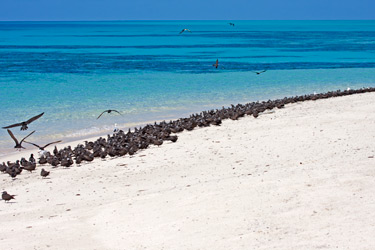 |
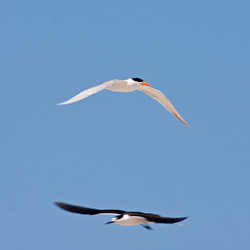 |
| Brown Noddies | Caspian and Sooty Terns |
Jeri arranged for a shuttle trip that would circle the island before returning to the big boat. This gave us closer looks at many of the birds. I also spotted a white morph Pacific Reef-Heron on the backside of the island. By the time we returned to the boat, further trips to the beach were no longer possible. Pretty soon we were picking up the last beach-goers, the divers, and those on the last semisubmersible trip and preparing to return to Cairns.
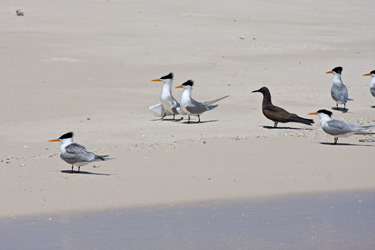 |
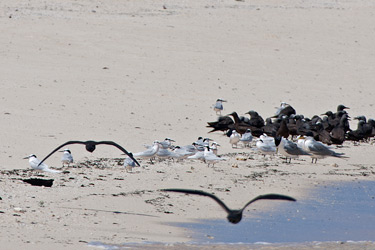 |
| Lesser Crested Terns | Noddies and Terns |
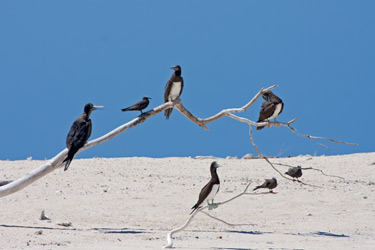 |
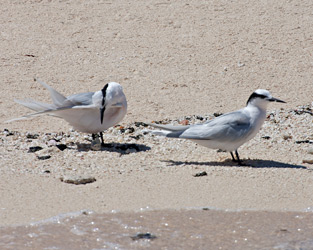 |
| Brown Boobies and Others | Black-naped Terns |
It was then time to leave the pale-green island waters. We returned to Cairns, arriving there around 5. We had better information about the location of the Rufous Owl, so we headed back to Centenary Park to look for it. As we headed for the owl tree, Susan noticed a Great-billed Heron, our first of the trip. We found the owl tree and started waiting. A number of birds flew by as the day ended, but the owl did not appear. Finally, we left for dinner.
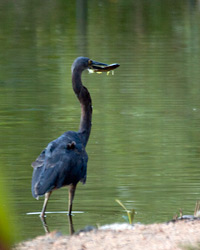 |
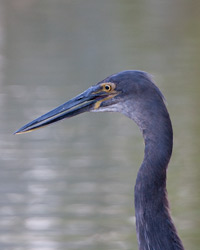 |
|
| Great-billed Heron | ||
Trip total—280 species including 255 lifers.
Rydges Tradewinds Hotel, Cairns